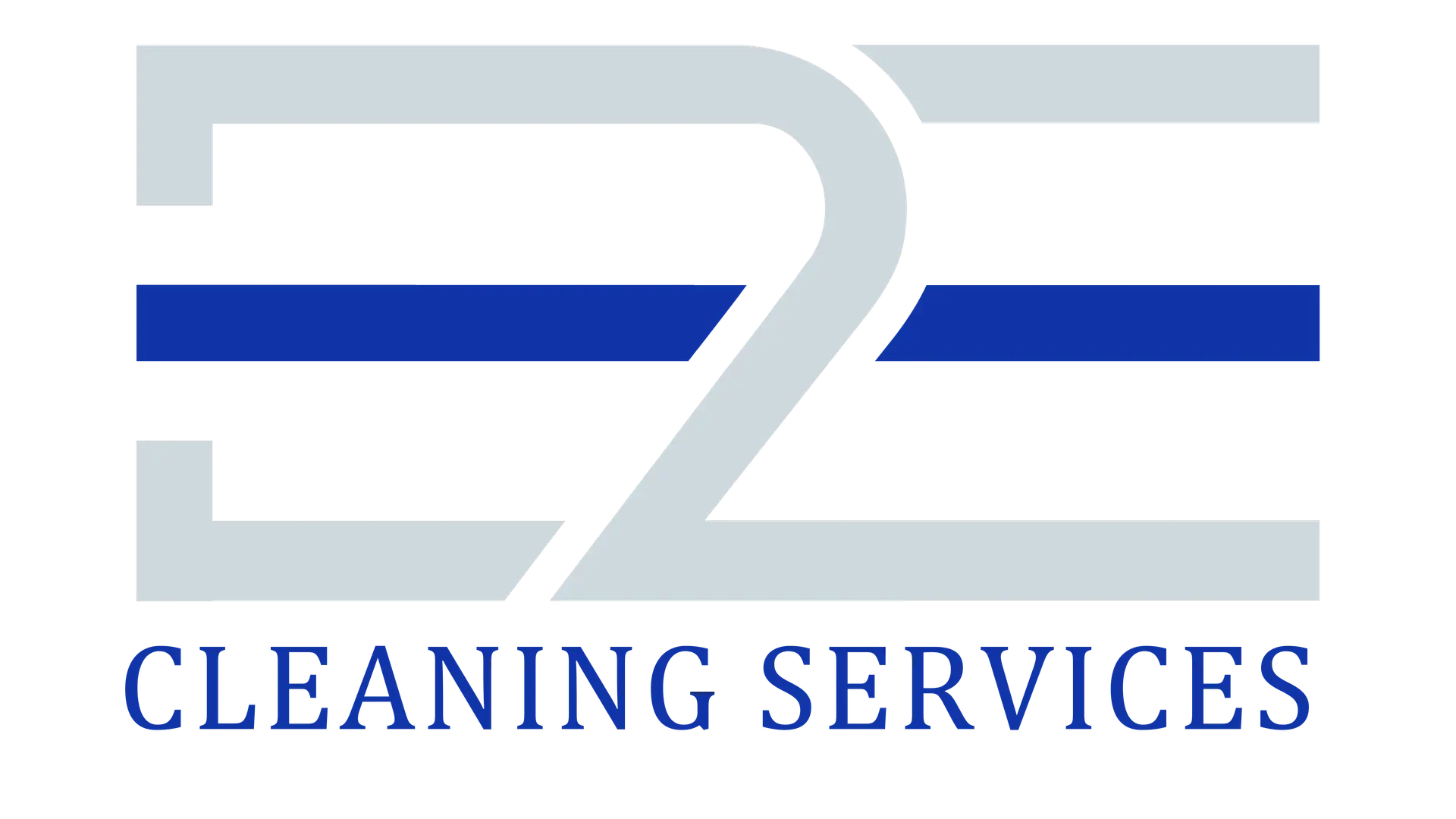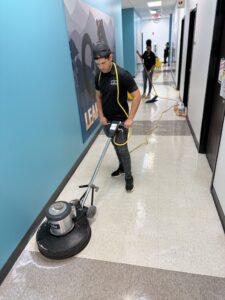Florida’s humid climate and the increased awareness of the environment has created new opportunities to the facility managers to embrace sustainable cleaning methods that will bring not only benefits to the business operations but also to the environment.
This article explores how Florida commercial facilities are implementing environmentally friendly solutions to reduce carbon footprints, enhance indoor air quality, and deliver real returns on investment, all while navigating the unique climatic conditions and regulatory environment of Florida.
Current State of Florida’s Green Economy and Facility Management Landscape
The green economy in Florida has achieved a lot of momentum as businesses recognize the economic and environmental benefits of sustainable operations. The Florida Department of Environmental Protection has established an elaborate environmental management framework whereby the main focus is to protect the air, water, and land resources and promote community partnerships that enhance ecosystems.
This environmental leadership has positioned Florida as a hub for sustainable business innovation. Facility executives across industries are proactively adopting green programs driven by several compelling factors:
- Evolving compliance standards that increasingly favor environmentally responsible practices.
- Economic incentives including operational cost savings and improved operational resource efficiency.
- Market Demand from stakeholders and consumers who prioritize eco-conscious businesses.
- Risk Management considerations around long-term carbon-intensive operational costs.
Sustainability in most industries has become a case of never turning back as much attention is paid to waste management, emission control, and the incorporation of renewable energy. In the last ten years, there has been massive investment in energy-efficient facilities and equipment as the companies shift towards activities that are costly and carbon-intensive yet have low long-term prospects in the emerging economy.
The tropical climate of Florida presents special problems to the facility management, especially in relation to humidity control, prevention of molds, and maintenance of indoor air quality.
It is these challenges that have led to green cleaning technology innovation that is specifically targeted to high-humidity environments. Facility managers are becoming more aware of the fact that the conventional, chemical-intensive cleaning methods not only are damaging to the environment, but also do not target the causes of most of the maintenance problems unique to the Florida business environment.
Florida consistently ranks # 1 for business climate according to Business Facilities magazine, making it an ideal environment for sustainable innovation. In this competitive landscape, sustainability management has evolved from optional practice to essential strategy for forward-thinking organizations seeking market advantage.
Environmental Cleaning Solutions and Benefits for Commercial Properties
The benefits of environmental cleaning solutions are far much more than just the mere substitution of conventional chemicals with greener ones. These solutions will solve the specific environmental issues of Florida and will offer quantifiable benefits in the performance of the facilities and the health of the occupants.
In the case of Florida, which is a humid climate, the specialized environmental cleaning methods are:
- Microfiber cleaning systems that clean more and use less water and chemicals.
- Electrostatic sprayers which offer better surface coverage at low levels of chemical consumption.
- Vapor cleaning technologies which clean surfaces with high-temperature steam as opposed to chemicals.
- Cleaning solutions that are based on probiotics and do not stop functioning after being applied to decompose organic matter.
- HEPA-filtered vacuum systems that prevent the release of particulates into the air.
Indoor Air Quality Improvement
Green cleaning procedures do not use harsh chemicals that emit volatile organic compounds (VOCs) that may lead to respiratory irritation, headaches, and long-term health problems.
Research has indicated that the quality of indoor air can be enhanced to decrease sick days by up to 39 % and enhance cognitive performance by 101 % in buildings with green certification.
In Florida facilities, where the buildings are tightly closed to humidity most of the year, the improvements in indoor air quality are especially important.
Reduced Environmental Impact
The ingredients of traditional cleaning chemicals are harmful to the aquatic ecosystems when discharged into the sensitive watershed of Florida. Green cleaning products are based on biodegradable formulations that do not pollute the environment. Also, the concentrated products and accurate dispensing systems reduce the packaging waste and transportation emissions.
Enhanced Asset Protection
Most of the conventional cleaning chemicals may corrode or discolour building materials after some time. Green cleaning products are designed to be efficient but mild on the surfaces to increase the life of the flooring, fixtures, and other building properties.
This protective advantage is especially useful to facilities in the coastal regions of Florida where salt air already contributes to a faster corrosion rate.
Improved Occupant Health
Environmental cleaning solutions remove the exposure to harsh chemicals that may cause asthma, allergies, and chemical sensitivities. This makes the indoor environments healthier, which promotes the well being and productivity of the occupants.
Studies have shown that enhanced indoor environmental quality has the potential to boost productivity by 8-11% which is a great value to the commercial premises.
Implementation Strategies for Sustainable Facility Management
The implementation of sustainable facility management is a complex process that needs a systematic approach that considers both operational and cultural aspects of organizational change.
The implementation process typically starts with:

Assessment and Baseline Establishment
Start with a facility audit that will assess the existing cleaning practices, chemical use, energy use, water use, and waste production. This assessment provides baseline measurements on which progress can be evaluated and determines particular areas of opportunities.
In the case of Florida facilities, this evaluation must cover humidity management measures, mold prevention measures, and indoor air quality measures.
Phased Implementation Planning
Do not change everything at once, instead create a phased implementation plan, where high-impact, low-resistance changes are implemented first. This strategy gains momentum and proves value and reduces operational disruption. An example of a stepped out process could start with:
- Switching to green cleaning products in non-specialized use.
- Use of energy-saving cleaning machines and measures.
- Implementing new technologies to address certain facility issues.
- Coming up with elaborate waste minimization and recycling initiatives.
Staff Training and Engagement
Sustainable facility management involves alterations in day-to-day practices, and thus, staff training and engagement are necessary. Create detailed training sessions that describe how to practice new things, as well as why these changes are important.
Establish feedback systems that allow employees to make suggestions on improvement and report difficulties. In the case of cleaning service providers, come up with certification programs that acknowledge environmental cleaning skills.
Technology Integration
Technology Integration The modern facility management is based on the integrated technology systems that offer real-time monitoring, analytics, and control features. Building Management Systems (BMS) and Energy Management Systems (EMS) allow facility managers to maximize operations at all times by giving granular data on facility performance.
Such systems are able to recognize areas of improvement and record the effects of sustainable practices.
Measurement and Continuous Improvement
Have clear key performance indicators (KPIs) of sustainable facility management, such as:
- KWh of energy use per square foot
- Water usage and cost trends
- Reduction and recycling of waste
- Measurement of indoor air quality
- Occupants scores of satisfaction
- Effectiveness assessments of cleaning
Periodically check these measures to determine the achievements and the areas of improvement. Report and share success to create organizational backing to further investment in sustainable practices.
Carbon Footprint Reduction Through Innovative Cleaning Technologies
Carbon footprints have become a major concern for responsible facility managers. Advanced cleaning technologies promise great potential of reducing carbon emissions without compromising the cleaning performance.
Energy-Efficient Equipment
The current cleaning systems integrate energy-saving features, that cut electricity costs and boost performance. Examples include:
- Equipments that are powered by batteries with low emissions.
- Vacuum systems that are highly efficient and consume less energy and trap more particulates.
- Floor cleaning systems with low moisture that save time on drying and energy consumption.
- Cleaning robots that are automated and optimize cleaning patterns.
Chemical Reduction Technologies
Advanced technologies have the potential to radically cut or remove the use of chemicals in most cleaning processes:
- Aqueous ozone systems which transform normal tap water into a potent sanitizer which returns to water after usage.
- The ultrasonic cleaning technologies, which involve the use of sound waves to cleanse surfaces, are used.
- Pathogen-killing UV-C light disinfection systems that do not use chemicals.
- Systems of dry steam vapor that are sanitized by heat and not by chemistry.
Smart Scheduling and Route Optimization
Technology-based scheduling and routing can help to save a lot of time on unnecessary travel, vehicle emissions, and resources wastage. The AI-based scheduling programs examine the facility use trends and clean-up requirements to develop the best service schedules and routes.
Such systems are able to save up to 30 % of the time spent traveling and ensure that cleaning is done in areas that require it the most.
Remote Monitoring and Predictive Maintenance
IoT-based cleaning machines and dispensing systems give real-time information on the usage trends, maintenance, and performance indicators. These systems eliminate wastage of resources through over utilization of resources and also make sure that the equipment is at its optimum efficiency.
Predictive maintenance functionality is used to detect possible equipment problems before they lead to operational problems or loss of efficiency.
Predictive maintenance is especially useful in Florida facilities with high humidity and rapid equipment wear, which aim at preventing equipment failure and optimal performance. The remote monitoring systems are able to monitor the humidity levels and automatically modify cleaning procedures to meet the evolving environmental conditions to ensure that the same results are obtained with minimal consumption of resources.
Economic Advantages and ROI of Green Cleaning Investments
Contrary to common misconceptions, well-designed sustainable facility management programs deliver strong financial returns alongside environmental benefits. the compelling economic case for green facility management includes:
Direct Cost Savings
Environmental cleaning solutions produce direct operational cost savings by:
- Less use of water by effective cleaning systems uses.
- Reduce the cost of chemicals by means of concentrated formulations and accurate dispensing.
- Reduced energy use by means of efficient equipment and processes.
- Longer lifespan of assets by means of milder cleaning methods.
- Less waste disposal by reducing the sources and recycling.
Humidity-specific solutions can help Florida facilities save more by eliminating the costs of mold remediation and minimizing the HVAC load by keeping moisture levels at the right levels.
Enhanced Property Value and Leasing Appeal
Properties with sustainable facility management practices command premium rental rates and attract high-quality tenants. Research shows that green-certification buildings have a higher rental rate of 3 – 7 % and higher occupancy rates compared to traditional buildings.
For commercial property owners, sustainability premiums directly enhance asset values and investment values and investment returns.
Risk Reduction and Compliance Assurance
Assurance Environmental cleaning procedures minimize the regulatory compliance risks by eradicating hazardous chemicals and adopting documented best practices.
The financial benefit of this risk mitigation is the saved compliance fines and liability insurance premiums. This value keeps on rising as environmental regulations are made stricter.
Productivity and Absenteeism Improvements
Healthier indoor environments will decrease absenteeism and enhance productivity, generating a major economic value.
Studies have shown that better indoor environmental quality can decrease the number of days of absenteeism by 2-4 days per employee per year and also enhance productivity by 8-11%. In the case of a 100-person office, such improvements can be in the hundreds of thousands of dollars annually.
ROI Timeline Considerations
While some sustainable facility management investments deliver immediate returns, others need long-term views. A comprehensive ROI analysis should consider:
- Short-term operational savings (usually chemical, water and waste disposal)
- Short-term rewards (less absenteeism, increased productivity)
- Long term value generation (longer life of an asset, increased property value)
The majority of environmental cleaning investments pay off in 12-24 months and the financial benefits continue to accumulate over the life cycle of the facility.
Conclusion: The Future of Sustainable Facility Management in Florida
With Florida economy still developing to be more responsible to the environment, sustainable facility management is an opportunity and a necessity of the progressive organizations. The combination of eco-friendly cleaning solutions provides real-life advantages at several levels: performance, human health, environmental performance, and financial results.
To the facility managers who are going through this change, the only way to succeed is to have a strategic approach that balances both the short-term needs of the operation and long-term sustainability objectives. Facilities can attain high levels of environmental improvements by adopting relevant technologies, training programs and management systems that will not only ensure that the facilities improve their competitive position.
The future of sustainable facility management in Florida is probably going to include additional technological integration, where AI-based systems will optimize the use of resources in real-time and will offer unprecedented insight into the performance of the facility.
New technologies will also keep on minimizing the use of chemicals and enhance the effectiveness of cleaning especially in solving the challenges associated with humidity in Florida.
Those organizations that embrace such changes early enough will be in a position to succeed in the changing business environment in Florida where environmental responsibility is becoming more and more part of business excellence. Through the application of holistic sustainable facility management initiatives, Florida companies will be able to lower their environmental impact and design healthier, more productive, and more economically sustainable business processes.






